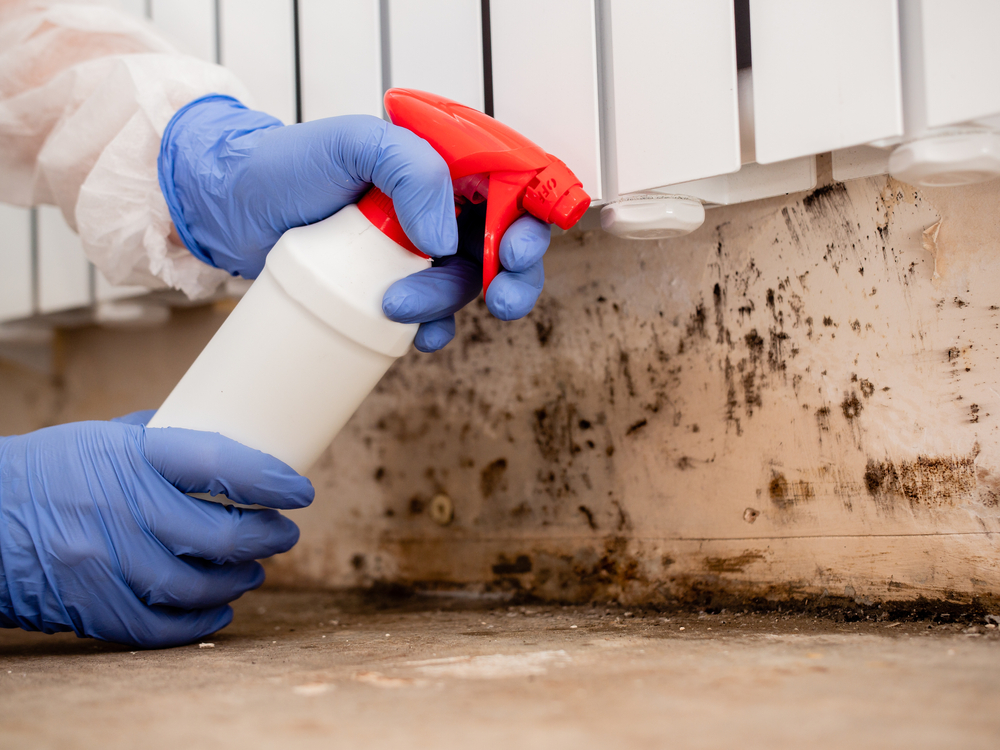Although molds are an important part of the environment, their growth indoors can wreak havoc and cause serious issues. And these problems happen fast. Unforeseen incidents like pipe leaks and natural disasters like floods can create standing water, which enables mold to grow in as little as 24 to 48 hours. Because of its rapid growth, mold can be hard to prevent. So it’s important to focus on controlling mold’s destructive path.

When remediating mold, harmful allergens and other pathogens can be released into the air, causing serious reactions when inhaled. To prevent these toxins from entering the lungs, specialists need to take the proper measures, not only to keep themselves safe but also people in adjacent areas. By leveraging the proper protective equipment, paired with the necessary knowledge and tools, contractors can meet safety standards and regulations to protect against mold-related infections and illnesses.
1. Personal Protective Equipment
Personal protective equipment (PPE) like respirators, gloves, and fitted goggles are important for maintaining the well-being of those working directly to remediate mold. But because PPE only protects the person wearing the equipment, it’s important to combine PPE with high-efficiency particulate air (HEPA) filtration machines, wet/dry vacuums, and disinfectants.
In addition to PPE and HEPA filtration, the Institute of Inspection Cleaning and Restoration Certification (IICRC) recommends utilizing two robust solutions to effectively remediate mold: reusable containment barriers and negative air machines.
2. Reusable Containment Barriers
To protect those in and around mold remediation projects, it’s essential to isolate the affected areas. Traditional methods for containment include poly sheeting and drywall. But these are all single-use materials that not only take a lot of time and effort to assemble but must be torn down and disposed of after each project, creating additional waste. All the extra time and costs add up fast. Fortunately, innovative reusable containment barrier systems offer contractors an efficient and effective way to contain areas affected by mold—while reducing construction time and material costs for each project.
Containment barriers can help contractors isolate contaminants and aid in the prevention of the affected air escaping to clean zones. Once the PPE is donned and containment walls have been installed, utilizing HEPA air filtration is a must. Combining a differential pressure monitor as well will provide comfort that your work zone is properly under negative pressure.
3. Portable HEPA Filtration System
Portable air scrubbers and negative air machines used in conjunction with your containment walls remove contaminated air from the sealed-off area. As the machines draw air in from the work zone, the air passes through a series of filters that remove particulates, like mold spores. Once the air passes through the machine, it’s exhausted through ductwork creating negative pressure and preventing cross-contamination to zones outside the contained space.
There are several varieties of air filtration devices available on the market today, but the best choices are units equipped with true HEPA filters. With reusable containment walls and true HEPA filtration systems working together, contractors get a complete containment solution that’s perfect for mold remediation projects.
Combining the Right Tools and Expertise
To safely and effectively remediate mold, it’s important to combine the right tools with the right knowledge. That’s why many remediation specialists choose to get their equipment from a provider that brings both the technology and the knowledge to the table. A provider with many years of industry experience can offer expert guidance, anytime support, and state-of-the-art solutions, while ensuring remediation and abatement experts get the job done as safely and efficiently as possible, without being exposed to harmful air.
Linda Armendariz is the rental market manager at Abatement Technologies.
ALSO READ: Prevent Indoor Mold to Protect Facility Occupants
